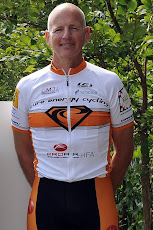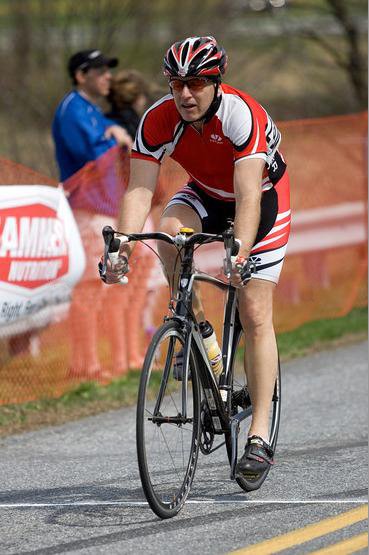The first thing I do when I take on EVERY new athlete for the year is to perform a Functional Threshold Power (FTP) test on them. The FTP test gives me four valuable pieces of information:
1) a maximum sustained average power (for 20 minutes) that will be used to establish the athlete's training zones/levels
2) gives me a baseline number for determining if the athlete's training plan is optimized/working
3) tells me how that person stacks-up against other cyclists/athletes his/her age (when comparing w/kg)
4) identifies strengths/weaknesses
In some cases, however, I perform additional tests like a CP1 or a CP5 test. CP stands for Critical Power. A CP1 test is your all-out maximum sustained average power for one minute. If you've never done one before- it's a gut check. You might be wondering why these particular duration tests were chosesn. They were chosen because the PhD weenies of the world believed they would best reflect anaerobic power (CP1), maximal oxygen uptake or VO2max (CP5) and lactate threshold (CP20 or FTP). I don't perform a (CP.08) test, a 5 sec. test, because I don't believe an indoor trainer (which is where I do most of my testing) is the safest place to do it. I'll do that test out on the road where the athlete can stand.
I do not perform the CP tests on the same day as the FTP test. I just think it's too much. I'll wait a day or two to perform the CP1 and CP5 test. So, what do the CP1 and CP5 tests tell me..other than the athletes approximate anaerobic power and VO2max? What they allow me to do is "power profiling". After I perform each of the aforementioned tests, I plot the data on a power profile chart which shows the maximal power output (w/kg) for each of the CP tests. An athlete that exhibits a high CP1 and a low FTP output is typically a good sprinter. That's not to say that this athlete can't be more of an "all-rounder" with focused training. Conversely, an athlete that exhibits a high FTP and a low CP1 is typically a good time trialist. If all of the athletes CP tests are pretty level, than that athlete would typify an "all-rounder".
Power profiling is in no way gospel. Just because you test poorly at CP1 and well at FTP does NOT mean you can never win a sprint in a Criterium. It's just a system for helping to determine a riders strengths and weaknesses. For many new riders, it's actually less accurate a system/method because most new riders are weak in all areas. But, make no mistake about it, if I see a relative newbie rider with Cat 2 power for CP1 and Cat 5 power for their FTP test..I'm not going to suggest that this athlete sign-up for road races in the Spring. Over the Winter we'd definitely work on improving the athletes lactate threshold (their weakness) without compromising their sprinting speed/power. I'd also HIGHLY recommend that this rider race criteriums and possibly even visit the local Velodrome to see if they'd like to do some track racing. Remember, you race your strengths and train your weaknesses. But, lets face it, it's more fun to do something you're good at...so why not do it?
Power ON! Coach Rob
Monday, November 22, 2010
Subscribe to:
Post Comments (Atom)






No comments:
Post a Comment